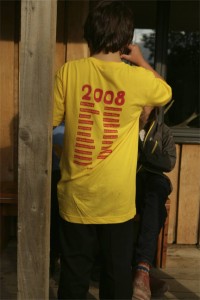In which, as the year comes to it’s end, our friends and collaborators look back and share their moments;
Fforest farm, lying at the mouth of the Teifi, is a cross between Esalen Institute in Big Sur, a Navajo reservation and a Welsh pub campsite. The pub in question is restored to its 19th Century slate simplicity. Sitting by the open fire with a pint of Penlon Cottage brewery’s Twin Ram, as Jeremy Barnes recounted Neutral Milk Hotel tour stories, I knew the planets had aligned. Fforest was the location for the howies Do Lectures. A hundred or so strangers came together to learn how to bake bread, forage, lobby MPs, start fires, act collectively and rise above. My DJ set was comprised solely of Cheb Khaled’s Hada Raykoum, Huw Stephens, ever the pro, segued Young Folks into Meic Stevens’ Y Brawd Houdini, the welsh language equivalent of Do You Believe in Magic? After that weekend at Fforest we all did.
I spent a lot of the year researching a book. This involved burritos in Santa Fe, barbecues in Silverlake, but mostly, it involved pubs. Pubs, and memories brought back to life again, amongst the thick, wooden table sheen reverie, of an afternoon pub. I rediscovered the art of daytime drinking as I watched people dredge their consciousness as they steered through the past: regret, anger but mainly, and happily, endless laughter. I was regularly stopped in my tracks. When I sat down to explore Dylan’s Tell Tale Signs it made astonishing sense.
And Wales. Always Wales. It started with the atypically prosaic defeat of the eternal foe at Twickenham then on, to the Grand Slam. During the facing down of the All Blacks and the haka, you could have run the National Grid from the hairs of the back of the necks at the Millennium Stadium. It’s impossible to articulate the emotional connection between Wales and rugby. Shane Williams might be the IRB player of the year, but we know he’s a Carmarthenshire Cob, raised on the grass that’s grown wild over the disused colliery above Garnant.
